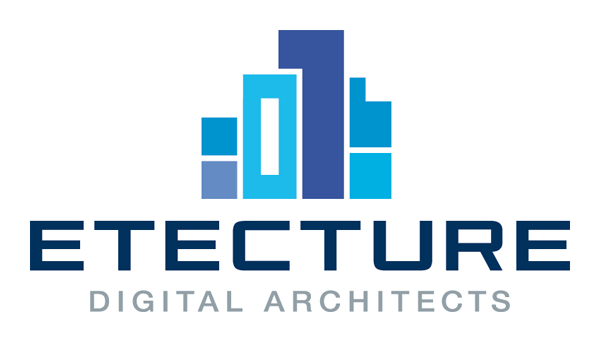Arne Martin Aurlien: Implement an Esoteric Programming Language for Fun and... Well, Fun

Inside most of us there’s a befunge programmer who wants to come out. When doing day-to-day “serious” programming it is usually a good idea to keep them as firmly locked up as possible. Let’s ignore that instinct for a little while.
In this talk I’ll try to convince you why you should try writing a completely impractical interpreter of your own. I’ll also use terms like “lexer”, “tokenizer” and “parser” at their widest possible definitions.



- » Trondheim, Norway
- » Website
- » Github
Transcript
Thank you. I have to wake my computer up. Hi everyone. I'm Arne Martin, I live in Trondheim Norway. I work for Boost Communications. They paid for my trip. I'll be talking about programming languages. I'll be talking about isotheric languages. And why I think you should write in one of these crazy languages. But, what's an isotheric language? Programming shouldn't be all business. Esotheric programming languages are languages that are often just for fun. And they are in almost all cases completely useless for any practical use. That makes it great. I have a few examples that you might have heard of. Brainfuck. Hello world. It is one of the most minimal languages. Only 8. It is kind of hard to use though. Then you have Malboge. It is harder to use. This is created to be hard to write programs. Each instruction is encrypted. The encryption changes for each step of the program. This Hello World example has not been written, as much as generated using brute force. And then we have things like Piat. It is a language you can write in an image editor. But why should anyone want to do that? Well, my main idea is: Why not? It is fun. Have some fun, write some code you would never write at your day jobs. Programming in new ways. As you write. And trying to learn the language you are writing for. I have to warn you before we proceed. I have no idea what I'm doing. No education or knowledge of writing compilers or interpreters. I just do things. I hope that you will not use any techniques, code, concept. That you will see here in any production code. I will not be held responsible. When I write code for fun, I don't do writing comments, or consider issues, like logging. It is just for fun. If I can save 2 lines. I will do so. The first language I will demonstrate is Befunge. Befunge is an ideocratic language. Which has new concepts. It is stack based. No variables. Only on a stack. You can only push and pop from this stack. Befunge are reflective. Can read and modify their own sourcecode at runtime. Multidimensional. Consist of single character instructions on a grid. There is an insertion pointer that moves in any direction. And executes instructions as it passes. Because of this, it is a cross between Forth and Lemmings. It is quite annoying to write programs for. It is completely useless. But also quite fun. I'll show you what it looks like. Here is an interpreter I have written for Befunge. It is using React. Now, the code is Hello World. It is on the stack in reversed order. A loop that will print out all the characters. Until it hits zero and terminates. Slow it down a bit. You can see down here, the program as it executes. The characters. And printing them. Back and forth. There. Another example. You know Fizzbuzz. You write the numbers from 1 to 100. You print fizz or buzz. You write fizzbuzz or just the number. Pay attention to the instruction pointer. Look at it go! Isn't it hilarious? So, what it does is, it adds 1 to the current number. Checks if it divisible by 3, if not it goes this way. It pushes the string it needs onto the stack. It goes down here down to this area to print it out. Then it goes all the way back to the beginning. And, does it over again. Nice example. This program demonstrates the reflective nature. If you pay attention to the upper left corner of the program. There is a number. When I run this. It is a counter. It reads in the number, adds 1 to it and prints it back out. Modifying the source code. Because it is reflective, Quine quite simple. Quine is a program that prints out its own source code. It reads from itself and prints itself out. You can write things like this one. Which I'm proud of. This program. Reads itself, one character at a time and prints itself back into the program on the next line. Moves down, and keeps going. You'll see what I mean. Prints itself out. When it is done it jumps down. Does it once more. It keeps going. Quite fun. Right. Let's look at the source code for this interpreter. The main entrypoint is this file. JS. What it does is basically create a new object. The main entry point for the interpreter. Functions like stopping and starting and stepping and things like that. The parser is what reads the source code and turns it into an actual program. Like a data structure. That the interpreter can work on. And that's actually quite simple in this case. All it needs to do is read in a text file and dump it into a 2D array. Splits the screen. And divides each line into separate characters. The interpreter for this thing is the main meat of the program. So, the interpreter is a huge multi method. Which has 1 implementation for each command in the language. It is like a functional switch statement. Different implementations, based on its first argument. If you get a space, we do a noap. There is a lot of stuff. Hash. We skip to the next cell. The add cell terminates the program. the underscore is the east-west if. If it is zero, go right, otherwise go left. The pipe-character is a north-south if. The numbers, push themselves on the stack. Including hexidecimal numbers. Basic aritmethic operators. Pops 2 values from the stack and pushes the result back. It takes 2 values and the operator in between and evals the result. Everything here is written. I don't know if you heard of that. If you haven't, I recommend you to check it out. It was brand new at the time. I started doing this. And it is a bad idea when it comes to memory usage. It was fun. Let's go back to the presentation. Did you enjoy it? (applause) This is online. You can try it if you want. I'll get the address later. I have 1 more language to show you. It is Thue. It is named after a Norwegian mathematician Thue. It is a quite different language. Very simple. It is based entirely around string rewriting. It is non deterministic. Which makes doing certain things hard. It is very simple. A program in Thue consists of several rules. Lefthand side, righthandside and colon, colon, equal. It will read from the user. It will print out what comes after. And then return the empty string. The rules section is finished with an empty rule. Below that is the initial state of the program. And the program runs by picking a rule at random. Applying it to the current state. Replaces the content of the lefthand side with the righthandside. And repeats. Until there are normal rules that can apply. So, let's implement this. Here is the basic skeleton for the Thue interpreter. A few basic functions. Parse to read the string. And generate program data structure thing. Run function to run the program. And it reads the file from arguments. And parses it and runs it. So, to parse is quite simple. First we start with what should the data structure look like. It is very simple. An array of rules. It has a string, current state. There is a flag that tells us if there are more rules that can match. So, what we do is to take the input string. And first of all we strip out the new lines and comments. And we divide it into 2 parts. The rules part. The initial input part. And we assign the initial input to the program state. Then we split the rules. And push them one by one on the array of rules. Next we get the run function. This is very simple. While the program is not exhausted, run another step. The step function, basically, it takes the program state as an input. Let's see. It takes all the rules. It shuffles them into random order. It sets the flag to true. And it loops through each of the rules. And as soon as it finds a rule, that actually can apply to the current program string, it runs the apply rule function. Which does the substitution. Then returns. The apply rule function, also quite simple. A few special cases to handle. First it assigns righthandside to the righthandside of rule. If it is 3 colons, it prompts the user for input. If the righthandside starts with tilde. It will writes. And it replaces every occurrence of lefthandside with righthandside in the input string. So, the result. I have a Hello.Thue. First it replaces B with A. Then it prints Hello World. See if it works. Yes! It does. I have another example program in Thue. This program prints the 99 bottles of beer on the wall song. All 99 verses. I didn't write this. I have a hard time wrapping my head around doing anything in Thue. There we go. All 99 bottles. Nice, right? Right. So, the main point of my talk is just, have some fun. Write some ugly code, create something. Having to write an interpreter and having it run the program. And print it. It is a quite nice feeling. I have some time left. I'll show you something completely different. A tool I'm using for the slides. I have written myself. And I had an interesting bug with this the other day. So, you remember... Get back to it. There. The Piat. That's an image. And I use substacks, picture tube that prints an image to the terminal. But, that was giving me, what you call it? When I was trying to run it. I tried to track this bug. There was a bug in the Pmg.js library. I'll just show you how I fixed this bug. there we are. Here we are inside where it copies the data. This is the point. I added this line. If 1 = 1, do nothing. If I comment this line out. And I try running my slides again. Quit this. And save it. It will say: fault. If I move this line one step up, and save. It will say: Fault. If I put it back where it was. It works just fine. If any of you have any idea why this could be! Please come talk to me. I'm really impressed with this. Craziest thing I have ever thing. Not literally. Right. I'll go through it to see my last slide. There we go. Thank you very much. (applause) for my slides and things. They are on Github. If you want to talk to me, I'll be in the lounge. That's it. Edit transcript via pull request.






















